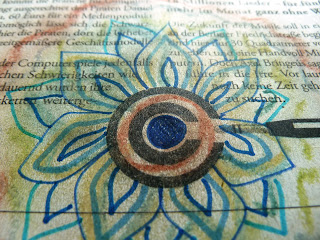 |
This smile suggests true happiness!
|
 |
The view outside our cabin
|
 |
| And yes one did cycle for hours in the middle of the pine forest with the family |
 |
We ate most meals alfresco..indeed
|
 |
| Pine cones the girls collected |
 |
Oh how I love these bikes and enjoyed cycling ever so much
|
 |
Great spacing of the cabins, it was a very private campsite indeed.
|
 |
A bit of doodling while sipping Frances lovely cider
|
 |
| And feeling the better for it. |
 |
Mike with Armelle and horse - ok pony riding
|
 |
The girls in their quarters
|
 |
The early riser
|
 |
la la la..doodle!
|
 |
| Downtime with a movie before bed- after hours in the pool |
 |
The little lad saddling up our pony
|
 |
| More creative spur... |
 |
The man ,the animal and daughter
|
 |
Happy feet!on the Atlantic coast
|
 |
and me-
LA ROCHELLE is the most attractive and unspoilt seaside town
in France. Thanks to the foresight of 1970s mayor Michel Crépeau, its
historic seventeenth- to eighteenth-century centre and waterfront were
plucked from the clutches of the developers and its streets freed of
traffic for the delectation of pedestrians. A real shock-horror outrage
at the time, the policy has become standard practice for preserving old
town centres across the country – more successful than Crépeau's
picturesque yellow bicycle plan, designed to relieve the traffic
problem.
La Rochelle has a long history, as you would expect of such a sheltered Atlantic port. Eleanor of Aquitaine
gave it a charter in 1199, which released it from its feudal
obligations, and it rapidly became a port of major importance, trading
in salt and wine and skilfully exploiting the Anglo-French quarrels. The
Wars of Religion, however, were particularly destructive for La
Rochelle. It turned Protestant and, because of its strategic importance,
drew the remorseless enmity of Cardinal Richelieu, who laid siege to it
in 1627. To the dismay of the townspeople, who reasoned that no one
could effectively blockade seasoned mariners like themselves, he
succeeded in sealing the harbour approaches with a dyke. The English
dispatched the Duke of Buckingham to their aid, but he was caught
napping on the Île de Ré
and badly defeated. By the end of 1628 Richelieu had starved the city
into submission. Out of the pre-siege population of 28,000, only 5000
survived. The walls were demolished and the city's privileges revoked.
La Rochelle later became the principal port for trade with the French
colonies in the Caribbean Antilles and Canada. Indeed, many of the
settlers, especially in Canada, came from this part of France.
|
I hope you enjoyed this fly post - I would love to share more soon, I have some really great photos on my other camera which has seemed to have gone AWOL. Some of my readers have asked me to post pics of our trip and I did not want to take ages to put some photos up. So, it is a case of better something than nothing at the moment. Until then take care.
ps- look out for my post on my half day jewellery making course- heavenly.
Tight hugs- Chelsea






















2 comments:
Lovely pics that truly reflect the success of this vacation. I really appreciate the historical twist at the end, quite interesting and informative. Excellent post.
awe thank you very much, always a pleasure hearing from you and your honest feedback. best wishes.
Post a Comment